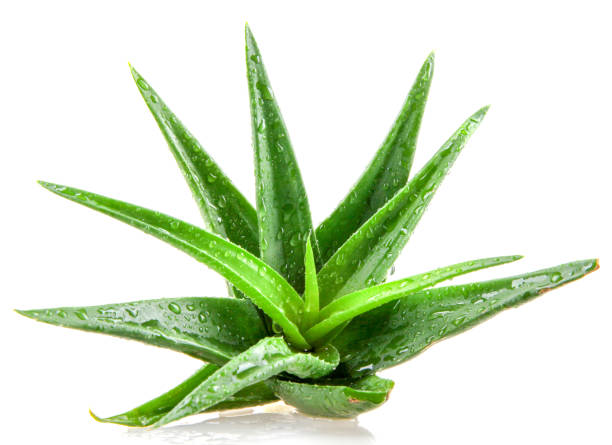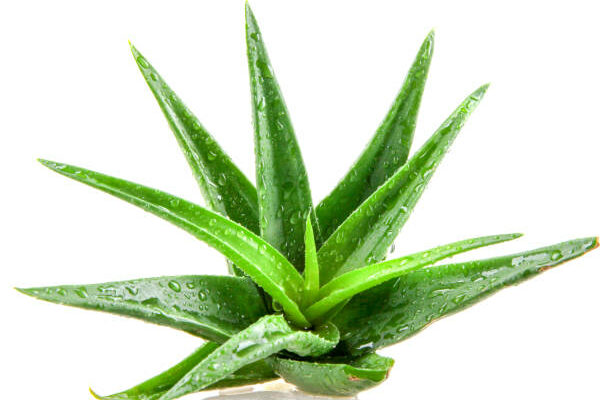
Presentation of aloe vera, a plant with multiple virtues
Belonging to the aloe familyaloe vera is a greasy plant found mainly in the sunniest regions and in the tropics. It can be found in the South of France, but it is especially popular in Mediterranean countries because it likes to soak up the sun. Designated succulent plant Or fleshy plantit adapts well to arid environments with its evergreen leaves and shallow roots.
There are many varieties of aloe with flowering at several periods, some taking place in autumn, others in spring. The flowers can take on red, yellow or even orange colors depending on the species.
The good news is that this perennial plant can be grown indoors perfectly! Don’t deprive yourself of it if you are lucky enough to have a veranda because it will have all the right conditions of sunshine and heat. In an apartment or a house, it can find its place, because it is a rather resistant plant which will offer a beautiful decoration to your interior!
Its fleshy leaves are full of this white liquid, called juice, which is very valuable for health. In case of sunburn, you can also pick a leaf and break it to extract this precious liquid, or mucilageand apply it directly to the skin to relieve the heat from the sun. Aloe vera also has soothing properties on insect bites.
Do not confuse the clear gel with the yellow liquid found under the leaf of the plant and which is rather irritating to the skin.
This aloe vera mucilage is also widely used in cosmetics for the manufacture of creams and ointments beneficial for skin and hair. It is not only used externally, since aloe vera is a medicinal plant recognized for its therapeutic virtues for millennia and can also be drunk to calm stomach problems in particular.
Aloe vera is rich in essential amino acids but also in vitamins and minerals, which makes its juice an interesting therapeutic beverage. In addition, she is recognized for her healing, soothing and softening properties as well as for its particularly hydrating aspect which makes it essential for the daily maintenance of the skin.
NASA was even able to see its air purifying properties. We can therefore consider it as depolluting plant for interiors.
It is recommended to wait for your aloe vera to mature for around 5 years before harvesting the branches for therapeutic or cosmetic use. In fact, the effectiveness of the active ingredients is then maximum.
What exposure for your aloe vera?
This succulent plant needs two conditions to fully flourish: heat and light! Ideally, it will do well in the southernmost gardens with maximum annual sunshine or in a veranda which is also well exposed to the south. However, direct rays on the plant should be avoided.
In well-heated interiors (average between 18° C and 21° C), it can find its place if there is abundant light. Shade or dark interiors should really be avoided for this plant.
The potted plant can be taken outside in summer, if your terrace meets all the criteria for your plant to look its best!
What are its watering requirements?
Above all, you should not drown your aloe vera. It really only needs a little water. Watering is mainly done by moistening the root ball, ideally with rainwater – if you can collect it – at ambient temperature. This plant does not like cold water.
Don’t let your aloe vera soak either and remember to drain the excess water from the saucer.
Aloe vera only needs very little water and readily goes into vegetative rest as soon as winter arrives.
The average watering frequency in spring and summer is around ten days, especially during periods of extreme heat. You can water once a month in winter, twice maximum to keep your plant in good condition.
Never let water stagnate to avoid rotting of the aloe vera roots!
Aloe vera and diseases
Like all plants, and even if it is particularly resistant and easy to maintain, aloe vera is not immune to certain diseases. You will therefore need to keep an eye on your succulent plant.
If you notice that the leaves of your aloe vera tend to turn yellow and appear to be drying out, you may need to review its exhibition. This plant likes heat, but remember that it does not like direct rays.
To avoid browning of the leaves and their unsightly appearance, it is necessary find the right balance between a lack of watering and too much water. Lack or excess of water will always be harmful to the plant. Find the right dosage and you will find a succulent plant full of energy and life.
This succulent plant can also be parasitized by aphids or even mealybugs on its leaves. You will need to adapt the choice of products (chemical or natural) and do not hesitate to seek advice from a professional.
When and how to repot aloe vera?
To keep your plants as long as possible, repotting is often an essential step to ensure their better well-being.
Aloe vera also needs to be repotted if you want this succulent to perform at its best. Experts advise repotting every 2 years or every 3 yearspreferably in spring.
When you repot your aloe vera, you should do so in a slightly larger container, preferably terracotta (breathes better than plastic) and with a pierced bottom.
Repotting is a meticulous operation. Do not use just any soil. The ideal is soil suitable for cacti as well as draining potting soil. If necessary, seek the advice of a garden center specialist when making your purchase.
How to multiply aloe vera?
To propagate aloe vera, simply take cuttings.
How to take a cutting from your aloe vera? Simply pull out the shoots appearing at the base of the plant, then let them dry for 3 or 4 days. Place the cut in plastic wrap to increase humidity.
Once this is done, all you have to do is plant your cutting. Choose a mixture of compost and sand, at the rate of 2 parts compost to one part sand. Place your cutting in this mixture. All you have to do is wait for your cutting to grow!
Does aloe vera need fertilizer?
Normally aloe vera is a resistant plant adapted to arid environments and difficult conditions. It generally grows on rather poor soils and therefore does not need fertilization.
However for your aloe vera, you can give it a slight boost by adding a little fertilizer in springespecially for an indoor aloe.
Here again, care must be taken to avoid excesses and, in case of doubt, seek the advice of a garden center sales consultant. The choice of product is decisive: you must use fertilizer for cacti and carefully follow the manufacturer’s instructions.
What do you need to know about your plant’s flowering?
When it has reached full maturity – between 3 and 5 years – aloe vera is a plant that can flower once a year, generally around March. It then offers a plume of yellow flowers characteristic of aloe vera, with their long floral stem.
You can enjoy this flowering for 4 to 6 weeks. Indoors, flowering is rarer, especially if the conditions (exposure to maximum light and heat) are not combined.
The flowers then fall off on their own when the flowering period is over.

